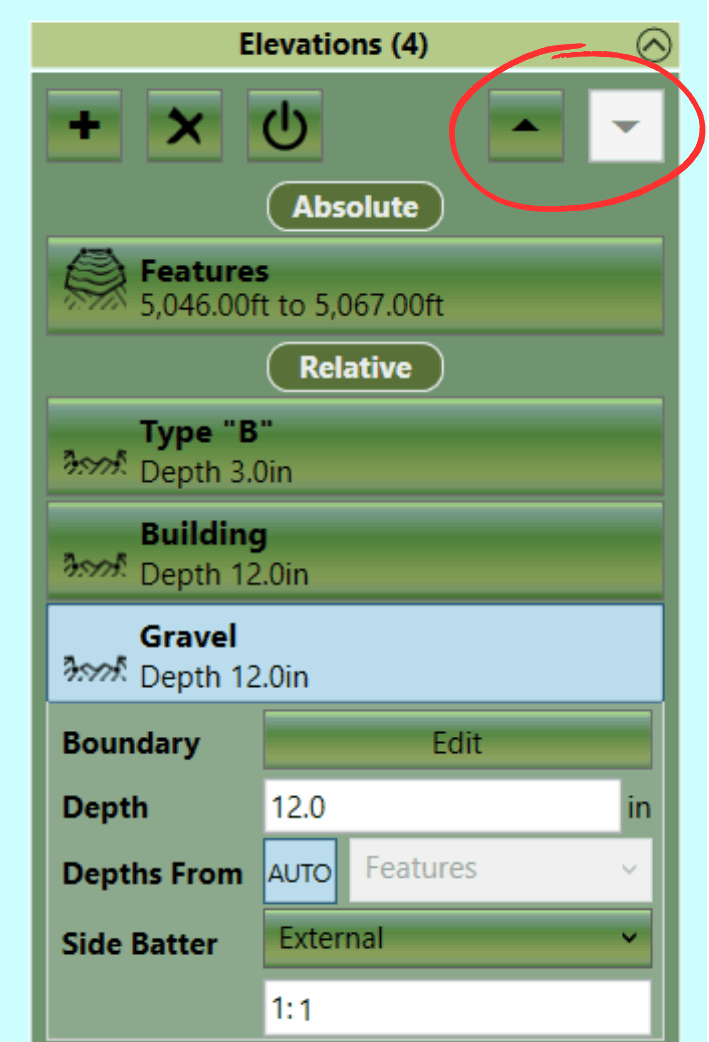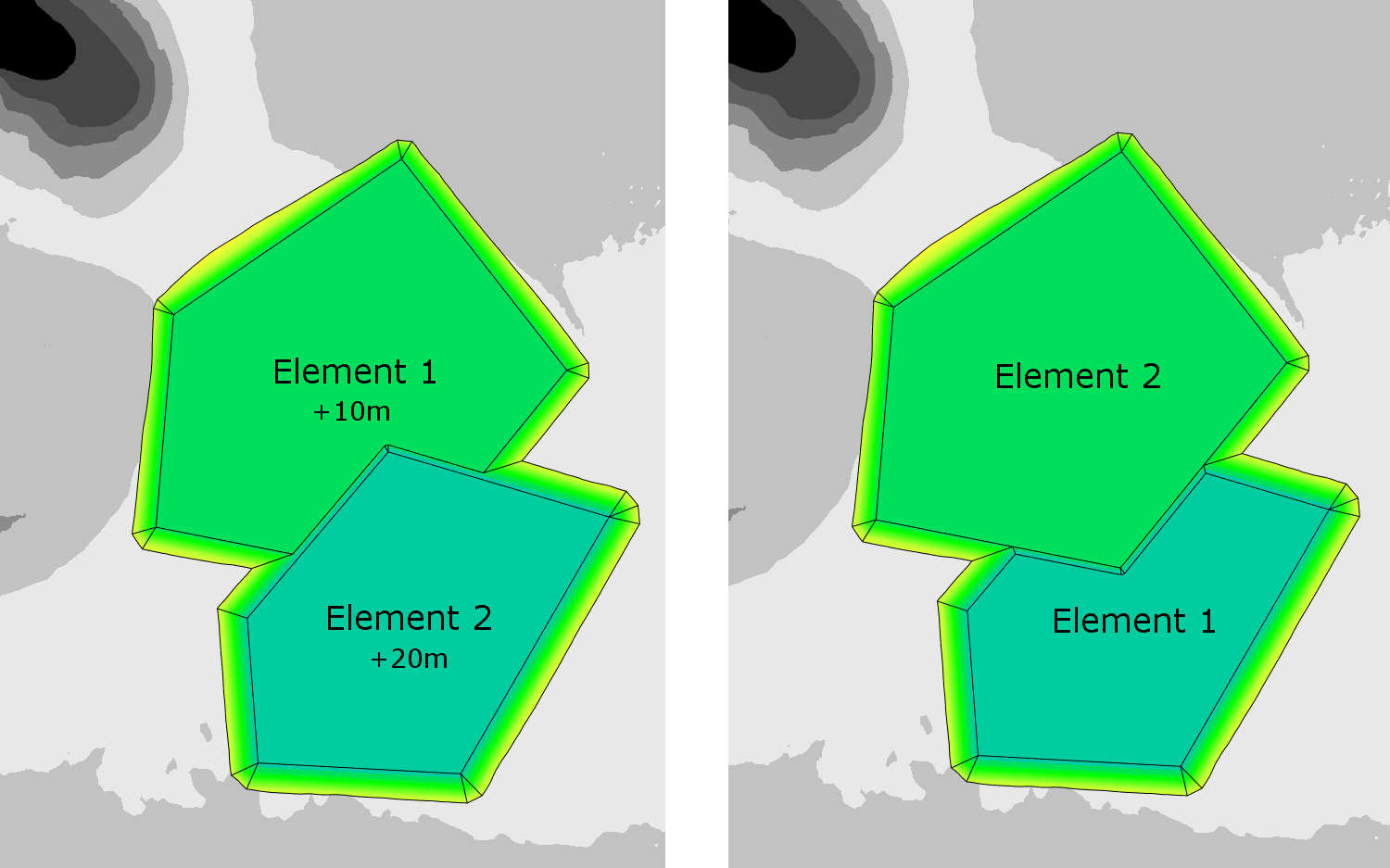Note that the calculation order is only important if you have earthworks elements which intersect at different levels.

|
In Kubla Cubed, it is possible to have intersecting earthworks elements. However, this can introduce a complication since it must be specified whether the level in the intersection region will be controlled by one element or the other. This is dictated by the 'calculation order' - in effect the order that the earthworks elements are 'built' within the software. Consider the following example, of two 'cut and fill' earthworks elements (see image below). If one element has a level of +10m and another is at +20m and they intersect, then what is the level of the resultant area where they intersect? In Kubla Cubed , the answer is that it will be the level of the element which is lower in the calculation order. Note: Changing the calculation order may affect elements other
than the one selected. For example, a Reduce element 'Reduce_1' which has 'Depths
From' set to a Platform called 'Platform_1'... if 'Platform_1' is moved to the bottom
of the list, 'Reduce_1's depth will be set from the next Absolute element above
it.
|
The image below illustrates the example described above. These two elements intersect at different levels, and they are both in 'cut and fill' mode. If the element at +10m is above the element at +20m in the calculation order (left image), then the higher element will fill over the top of the lower element. However, if the calculation order of these two elements is reversed (right image) then the lower element will instead cut material out of the higher one.


|
Mastering the program requires Understanding Construction Phases & Calculation Order.These concepts are studied in context through scenarios and demos in the video. |